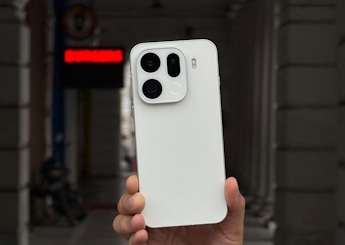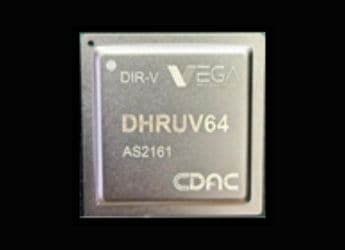- Home
- Mobiles
- Mobiles Features
- Samsung Galaxy Note 9 vs Galaxy Note 8: What's New and Different
Samsung Galaxy Note 9 vs Galaxy Note 8: What's New and Different

Samsung Galaxy Note 9 has an all-new S Pen and a larger Infinity Display
Samsung Galaxy Note 9 was officially unveiled on Thursday as the successor to the Galaxy Note 8. The new Galaxy Note model features a larger Quad HD+ Super AMOLED display and an all-new S Pen that includes Bluetooth support. The S Pen also doubles as a presentation remote control and can be used to take selfies. Samsung has also offered more RAM capacity over the predecessor to let users have more room for multitasking. While the presence of the larger panel increases the dimensions of the Galaxy Note 9 when compared with the Galaxy Note 8, the new model has a diamond-cut metal frame that feels slimmer than the predecessor. There is also a bigger battery on the new model over last year's Galaxy Note 8.
As there are many noteworthy differences, here's our take on what's new and better in the Samsung Galaxy Note 9 over the Galaxy Note 8.
Samsung Galaxy Note 9 vs Samsung Galaxy Note 8 price
Samsung Galaxy Note 9 price has been set at $999 (roughly Rs. 68,700) for the 6GB RAM and 128GB storage variant, while its 8GB RAM and 512GB storage option is priced at $1,250 (roughly Rs. 85,900). The smartphone comes in Midnight Black, Metallic Copper, Ocean Blue, and Lavender Purple colour options. The Ocean Blue colour variant notably has the iconic Yellow-coloured S Pen. Price and availability details of the Galaxy Note 9 in India aren't yet revealed.
In contrast, the Samsung Galaxy Note 8 was launched in India at Rs. 67,900 in the 64GB storage configuration. It debuted with Deepsea Blue, Maple Gold, Midnight Black, and Orchid Gray colour options. In the US, it is currently available for $749 (roughly Rs. 51,500), for the 64GB storage variant.
Samsung Galaxy Note 9 vs Samsung Galaxy Note 8 specifications
The dual-SIM (Nano) Samsung Galaxy Note 9 runs Android 8.1 Oreo along with Samsung Experience UX on top and features a 6.4-inch Quad HD+ (1440x2960 pixels) Super AMOLED Infinity Display panel - sporting 516ppi of pixel density. Under the hood, Samsung has provided a 10nm Qualcomm Snapdragon 845 SoC in the US and the Exynos 9810 SoC in global markets, coupled with 6GB and 8GB RAM options. The Galaxy Note 9 has a horizontally-placed dual rear camera setup that includes a 12-megapixel dual pixel sensor along with a wide-angle lens that has a variable f/1.5 and f/2.4 aperture and a 12-megapixel sensor along with a telephoto, f/2.4 autofocus lens. Both sensors are powered by dual OIS (optical image stabilisation) and support features such as 2x optical zoom and 10x digital zoom. For selfies, there is an 8-megapixel sensor backed by an f/1.7 aperture, autofocus lens. There is a scene optimiser with 20 scene types. Also, the handset has features such as flaw detection that can detect the blinking of eye, lens smudge, and backlight to improve images. Further, there are HDR and live focus modes and an AR Emoji feature that first arrived on the Galaxy S9 models earlier this year.
In terms of storage, the Galaxy Note 9 has 128GB and 512GB of onboard storage options that both are expandable via microSD card (up to 512GB). There are several connectivity options, including 4G VoLTE (LTE Cat. 18), dual-band (2.4GHz and 5GHz) Wi-Fi 802.11ac, Bluetooth v5.0, GPS/ A-GPS, NFC, ANT+, USB Type-C, and a 3.5mm headphone jack. Sensors on board include an accelerometer, barometer, gyroscope, geomagnetic sensor, hall sensor, heart rate sensor, proximity sensor, RGB light sensor, Iris sensor, and a pressure sensor. There is also a fingerprint sensor that sits below the rear camera setup.
Samsung has given a 4000mAh battery on the Galaxy Note 9 that supports fast charging and is compatible with wired and wireless charging technologies. The battery pack is notably 21 percent bigger in capacity than what was available on the Galaxy Note 8. Samsung has also embedded street speaker tuned by AKG and an enhanced security offering through Samsung Knox and biometrics. On the dimensions front, the Galaxy Note 9 measures 161.9x76.4x8.8mm and weighs 201 grams. The Bluetooth-enabled S Pen measures 5.7x4.35x106.37mm and weighs 3.1 grams. Besides, both the Galaxy Note 9 and its S Pen are IP68 rated. Dual-SIM (hybrid) variants of the smartphone will be available in some regions.
Unlike the Galaxy Note 9, the dual-SIM (Nano) Samsung Galaxy Note 8 came with Android 7.1.1 Nougat, though it recently received an update to Android 8.0 Oreo. There is a 6.3-inch QHD+ (1440x2960 pixels) Super AMOLED Infinity Display panel with a pixel density of 521ppi and an aspect ratio of 18.5:9. The Galaxy Note 8 in the US comes with a Qualcomm Snapdragon 835 SoC, whereas its global version was launched with the Exynos 8995 SoC - both coupled with 6GB of LPDDR4 RAM. For capturing images and recording videos, there is a dual rear camera setup that consists one 12-megapixel Dual Pixel sensor coupled with a wide-angle autofocus lens that has an f/1.7 aperture and the other sensor also has the same 12-megapixel resolution but comes with a telephoto lens that has an f/2.4 aperture. Both sensors have separate OIS and enable 2x optical zoom. There is an 8-megapixel autofocus sensor that has an f/1.7 aperture.
The India version of the Galaxy Note 8 brought 64GB of built-in storage, though it had 128GB and 256GB storage variants in certain markets. The storage is expandable via microSD card (up to 256GB). Connectivity options on the Galaxy Note 8 include 4G VoLTE (LTE Cat. 16), dual-band (2.4GHz and 5GHz) Wi-Fi 802.11ac, Bluetooth v5.0, GPS/ A-GPS, NFC, MST, 3.5mm headphone jack, and USB Type-C. Also, onboard sensors include an accelerometer, ambient light sensor, barometer, digital compass, gyroscope, heart rate sensor, iris sensor, proximity sensor, and RGB light sensor. The smartphone packs a 3300mAh battery that supports wireless charging and is compatible with Quick Charge 2.0. Lastly, it measures 162.5x74.8x8.6mm and weighs 195 grams. The Galaxy Note 8 as well as its bundled S Pen both have IP68-certified builds - similar to the Galaxy Note 9.
Has Fortnite pulled off an epic move by abandoning Google Play and going Samsung exclusive? We discussed that on Transition, our weekly gaming podcast, which you can subscribe to via Apple Podcasts or RSS, download the episode, or just hit the play button below.
Get your daily dose of tech news, reviews, and insights, in under 80 characters on Gadgets 360 Turbo. Connect with fellow tech lovers on our Forum. Follow us on X, Facebook, WhatsApp, Threads and Google News for instant updates. Catch all the action on our YouTube channel.
Related Stories
- Samsung Galaxy Unpacked 2025
- ChatGPT
- Redmi Note 14 Pro+
- iPhone 16
- Apple Vision Pro
- Oneplus 12
- OnePlus Nord CE 3 Lite 5G
- iPhone 13
- Xiaomi 14 Pro
- Oppo Find N3
- Tecno Spark Go (2023)
- Realme V30
- Best Phones Under 25000
- Samsung Galaxy S24 Series
- Cryptocurrency
- iQoo 12
- Samsung Galaxy S24 Ultra
- Giottus
- Samsung Galaxy Z Flip 5
- Apple 'Scary Fast'
- Housefull 5
- GoPro Hero 12 Black Review
- Invincible Season 2
- JioGlass
- HD Ready TV
- Laptop Under 50000
- Smartwatch Under 10000
- Latest Mobile Phones
- Compare Phones
- Realme Narzo 90x 5G
- Realme Narzo 90 5G
- Vivo S50 Pro Mini
- Vivo S50
- OPPO Reno 15c
- Redmi Note 15 5G
- Redmi Note 15 Pro 5G
- Redmi Note 15 Pro+ 5G
- Asus ProArt P16
- MacBook Pro 14-inch (M5, 2025)
- OnePlus Pad Go 2
- Poco Pad M1
- Just Corseca Skywatch Pro
- Honor Watch X5
- Acerpure Nitro Z Series 100-inch QLED TV
- Samsung 43 Inch LED Ultra HD (4K) Smart TV (UA43UE81AFULXL)
- Asus ROG Ally
- Nintendo Switch Lite
- Haier 1.6 Ton 5 Star Inverter Split AC (HSU19G-MZAID5BN-INV)
- Haier 1.6 Ton 5 Star Inverter Split AC (HSU19G-MZAIM5BN-INV)

















